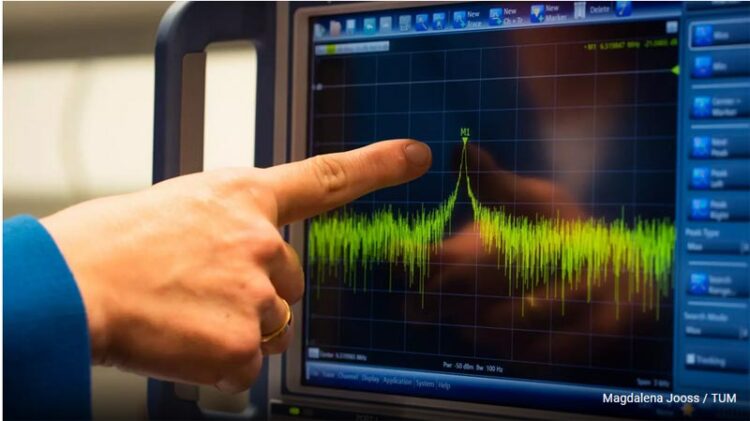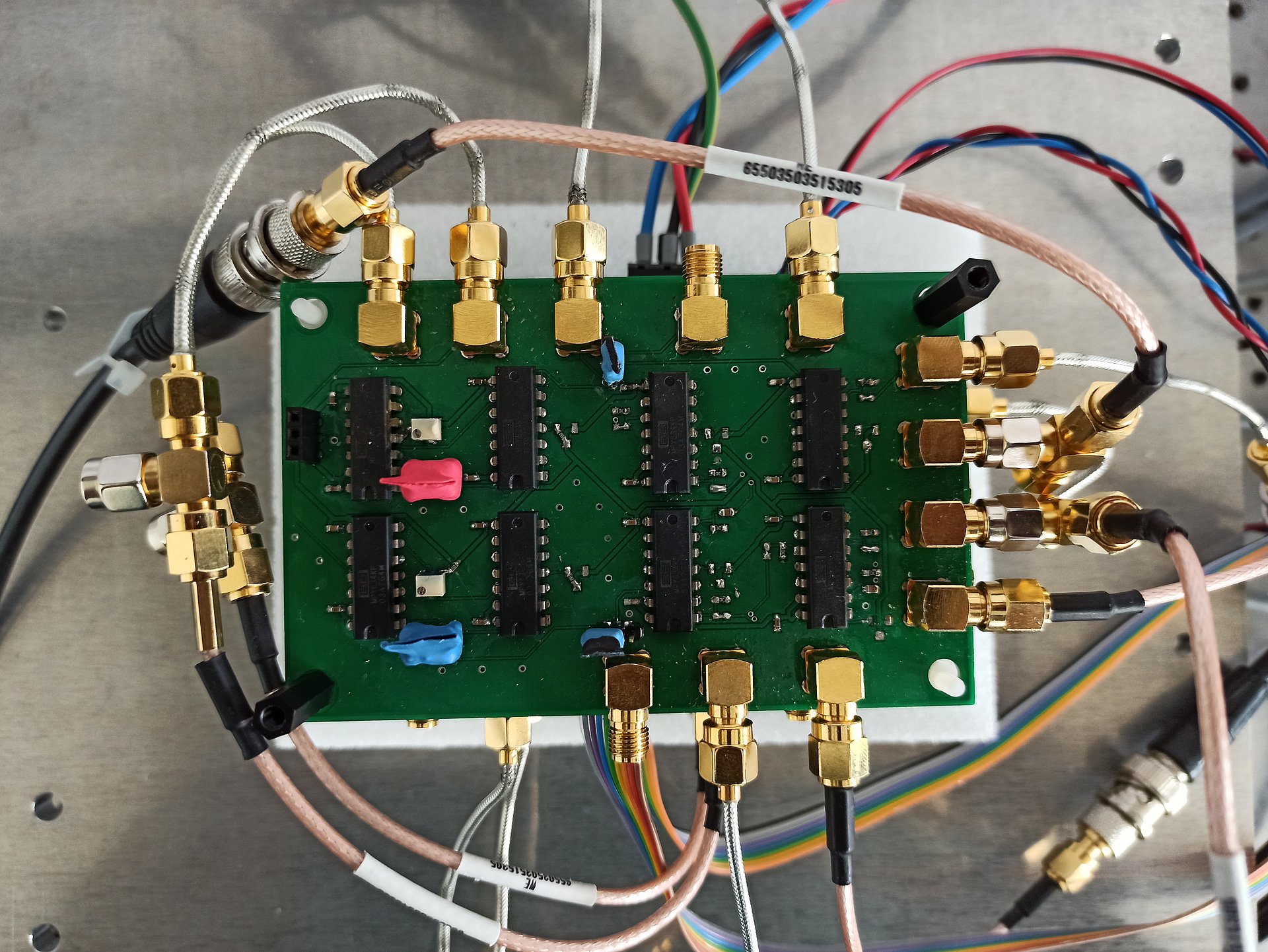Possibility discovered for more sensitive sensors

Measurement of a high-frequency signal
Credit: Magdalena Jooss / TUM
Theoretical extension of parametric amplification.
Sensors in electronic devices work with high-frequency signals. For maximum accuracy in the measurements, the parametric amplification effect is used. Researchers at the Technical University of Munich (TUM) are investigating how this effect can significantly expand the functionality of sensors. Possible applications include improved location positioning with microelectromechanical sensors like those used in smartphones.
Most people are probably familiar with the phenomenon from childhood: standing on a swing, a child rhythmically bends and straightens their knees to get it going. The swing goes higher and higher along a defined path. In physics and applied mathematics, this is called parametric amplification. It is found in many electronic devices. This effect is used, for example, to increase the sensitivity of these devices for improved accuracy in measurements. Micro- and nanostructured components in navigation systems, smartphones and other mobile end devices utilize parametric amplification. It is also used in self-driving cars. Researchers at TUM are working to expand the limits of this technology. A new study has calculated how these limits can be overcome.
Frequency range of parametric amplification theoretically expanded
“Until now, parametric amplification has been limited to a very narrow frequency range of the electrical, optical or mechanical vibrations, also known as oscillations. The same way as the swing always goes back and forth at a fixed frequency. It cannot go faster,” says Eva Weig, the Head of the Chair of Nano and Quantum Sensors. “With researchers at TU Darmstadt, we have used a theoretical model calculation to find out what happens when this frequency range is expanded. According to our calculations, this could greatly improve the sensitivity of the sensors.”
The researchers modelled dynamic, i.e. oscillating, micro and nanosystems. As their starting point for their calculations, they applied Mathieu-Duffing systems. This calculation approach is used in most electronic devices. To qualify as a Mathieu-Duffing system, a system must meet three criteria: it must have two or more coupled oscillations, mathematically non-linear elements must be present, and parametric amplification must occur. An element is non-linear in this case if the displacement of the oscillation is not proportional to the applied drive force.
“Our work focused on an asynchronous parametric amplification. This effect is comparable to two playground swings that are connected but not pushed at the same time,” says Dr. Ahmed Barakat, a scientist at the Chair of Nano and Quantum Sensors. “In that case we see broadband amplification. As a result, we cannot only amplify a few frequencies, as before. Instead we can address them flexibly, which enables us to significantly expand the functional range.”
Practical application of parametric amplification
Electronic implementation of parametric amplification. Credit: TU Ilmenau / Ahmed Barakat
An important application of parametric amplification is the microgyroscope, a rotational speed sensor that is found not only in every smartphone, but also in satellites. It can be pictured as a rotationally symmetrical spinning top, mounted in movable bearings. If researchers are able to improve parametric amplification, it will be possible, for example, to determine the position and path of satellites more precisely. In addition, parametric amplification can also play an important role in quantum computing technology in the future, for example in converting signals.
More information
The study is based on the doctoral thesis of Ahmed Barakat, which he wrote at TU Darmstadt, and his further research on the topic at TUM. Ahmed Barakat has also received the Ali H. Nayfeh Best Paper Award for his publication. The award recognizes the best three publications presented at the International Nonlinear Dynamics Conference (NODYCON).
Wissenschaftliche Ansprechpartner:
Prof. Eva Weig
Chair of Nano and Quantum Sensors
Phone: +49 (89) 289 – 51270
eva.weig@tum.de
Originalpublikation:
Barakat, A.A., Weig, E.M. & Hagedorn, P. Non-trivial solutions and their stability in a two-degree-of-freedom Mathieu–Duffing system. Nonlinear Dyn (2023). doi.org/10.1007/s11071-023-08659-5
Weitere Informationen:
https://www.tum.de/en/news-and-events/all-news/press-releases/details/possibilit…
Media Contact
All latest news from the category: Power and Electrical Engineering
This topic covers issues related to energy generation, conversion, transportation and consumption and how the industry is addressing the challenge of energy efficiency in general.
innovations-report provides in-depth and informative reports and articles on subjects ranging from wind energy, fuel cell technology, solar energy, geothermal energy, petroleum, gas, nuclear engineering, alternative energy and energy efficiency to fusion, hydrogen and superconductor technologies.
Newest articles

NASA: Mystery of life’s handedness deepens
The mystery of why life uses molecules with specific orientations has deepened with a NASA-funded discovery that RNA — a key molecule thought to have potentially held the instructions for…

What are the effects of historic lithium mining on water quality?
Study reveals low levels of common contaminants but high levels of other elements in waters associated with an abandoned lithium mine. Lithium ore and mining waste from a historic lithium…

Quantum-inspired design boosts efficiency of heat-to-electricity conversion
Rice engineers take unconventional route to improving thermophotovoltaic systems. Researchers at Rice University have found a new way to improve a key element of thermophotovoltaic (TPV) systems, which convert heat…




